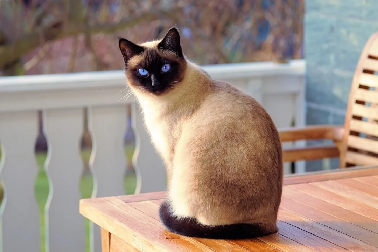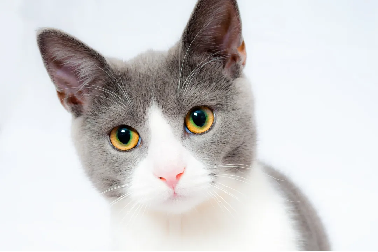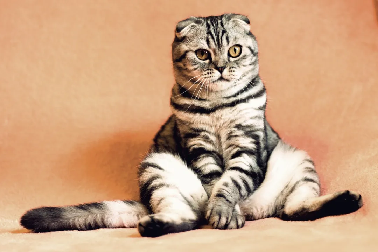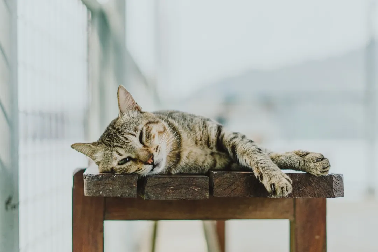How long does a domestic cat live?
Successful domestic cat
There are many types of feline animals, including lions, tigers, cheetahs, leopards, and so on. However, the most successful feline animals are not the strongest tigers and male lions, but domestic cats. Since the decision of the domestic cat to enter human households from the wild 6000 years ago, it has become one of the most successful animals. In the past few thousand years, the number of all feline species except for domestic cats has sharply decreased, while the number of domestic cats (species, not referring to cats kept at home, including wildcats, stray cats, etc.) has increased to 1 billion. When we talked about dogs in the previous issue, we mentioned that in mammals, the larger the body size, the longer the lifespan, and the smaller the body size, the shorter the lifespan. Dogs are an exception, and cats are another exception. Normally, cats are smaller in size and have a longer lifespan than dogs. They are only slightly larger than rabbits, but their lifespan is more than twice as long. There are various opinions on the lifespan of pet cats, but most doctors believe that the average lifespan of cats raised in good households is 15-20 years old, and some miracle cats even live to over 30 years old.
As an animal doctor who raised two cats that lived to the age of 19, I believe that the most important factors affecting the lifespan of cats are scientific diet, careful observation and early detection of diseases, good medical care, a quiet and stable environment, and reducing the number of cats in the home. As the saying goes, it makes sense for cats to have a longer lifespan. In a study on cat mortality, the most common causes were trauma (12.2%), kidney disease (12.1%), non-specific diseases (11.2%), tumors (10.8%), and mass lesions (10.2%).
Life factor
According to the Journal of Feline Medicine, the lifespan of cats is influenced by many factors, including health, environmental safety, weight, breed, gender, and sterilization.
1: Regularly consult doctors about the health of cats. Cats that undergo annual check ups after middle and old age tend to have longer lifespans compared to cats that are not cared for and only used as playthings;
2: Cats that are kept alone and rarely go out at home have a much longer lifespan than cats that live in groups or frequently go out;
3: For every 100 grams of weight that exceeds the ideal adult weight, a cat’s lifespan will be shortened by 7.3 days, indicating that obese and overweight cats will shorten their lifespan;
4: The average lifespan of hybrid cats is 463.5 days longer than that of purebred cats; The lifespan of purebred cats varies greatly among different breeds, with the largest Maine Coon cat having an average lifespan of only 10-13 years, while Siamese cats have an average lifespan of 15-20 years;
5: The average lifespan of a female cat is 485 days longer than that of a male cat;
6: The lifespan of sterilized cats is 390 days longer than the average lifespan of unsterilized cats;
The record holder for the longest lived cat in history is a cat named “Creme Puff” from Texas, USA. It lived for 38 years and 3 days and is currently the Guinness World Record holder.
Age stage
In the past, some studies compared the age of cats with that of humans, and simply summarized it as 1 year old for humans is approximately equal to 7 years old for cats. This is incorrect because cats mature much more at 1 year old than 7-year-old humans, and their mental and physical development is basically mature. At present, scientific research calculates that January for cats equals 1 year for humans, March for cats equals 4 years for humans, June for cats equals 10 years for humans, December for cats equals 15 years for humans, 18 months for cats equals 21 years for humans, 2 years for cats equals 24 years for humans, and 3 years for cats equals 28 years for humans. From now on, approximately every year of cat development equals 4 years for humans.
Cats typically go through five life stages in their lifetime, and their care methods can vary significantly. Cat owners can plan ahead to address some health and behavioral issues.
1: During the kitten stage (0-1 years old), cats will be exposed to many new foods, which is the best stage for learning and developing habits, as well as the best time for them to make friends. For example, getting to know other pets, being familiar with family members, being familiar with the sound of TV and mobile phones, and being familiar with the pet owner’s grooming habits and hugs. Learn to use the restroom in the right place and search for food at the right time. Pet owners should eat food specially formulated for growth during this period. They need higher calories to help them grow stronger. According to the requirements of the American Feed Management Association, appropriate diets should be labeled as “providing comprehensive nutrition for growing kittens”. Kittens are also in the period of initial vaccination, such as rabies, feline distemper, and feline herpesvirus. As they age, they may consider sterilization to reduce their chances of developing cancer or certain reproductive diseases in the future.
2: During the youth stage (1-6 years old), many friends can feel that the biggest characteristics of kittens are being very active and curious. Their bodies have already developed and their demand for energy and nutrition has decreased. Therefore, they should switch to cat food and control their diet according to the cat food scale to reduce the possibility of them developing obesity in the future. Cats of this age have poor resistance to certain diseases, such as asthma, respiratory infections, cystitis, or stones, which are very common. Early detection of the manifestations of these chronic diseases can lead to long-term recovery and avoid acute attacks.
3: At the mature stage (6-10 years old), pet owners may notice that their cats have become lazy. They do not play frequently, but rather sit there and view their surroundings from a divine perspective. Some mature cats may become accustomed to being more active late at night than during the day, while sleeping primarily during the day. Another manifestation may be in the cat restroom, where cats who tirelessly buried their feces in their youth no longer conceal the odor of their feces at this age. Cats at this age should start to observe their hair licking behavior. Hair balls are blocked in the stomach and lose weight, especially focusing on gum disease. It is recommended to keep the habit of brushing teeth or start using mouthwash gel. Some organs in the body may also begin to develop diseases at this age, with the most common being kidney failure, digestive system diseases, arthritis, and other illnesses.
4: In the elderly stage (11-14 years old), cats begin to transition from adulthood to old age, but the age of transition varies greatly depending on the breed. Sleeping time gradually increases, but they still maintain vitality and muscle strength for many years. Previously, some hidden chronic diseases began to gradually manifest, such as stones, kidney failure, cirrhosis, cataracts, hypertension, arthritis, and other diseases. In terms of diet, there has been a shift towards easily digestible and moderately energetic elderly cat food, and the amount of food consumed has gradually decreased.
5: In the advanced age stage (over 15 years old), cats at this age find it difficult to see active play and curiosity about other things. Their most preferred activity may be digging into plastic bags. They usually spend most of their time either sleeping or eating, occasionally getting up to drink water and lick their fur, and basking in the sun. After this age, even minor illnesses from a young age can lead them to the end of their lives, so if you notice changes in diet or urine, consult a doctor in a timely manner.
I provide 3 feeding suggestions for cat owners, including timely vaccination even for cats that do not go out; Careful observation of daily life and preventive scientific care; Monitor the cat’s diet and weight, you can be thin or not fat.
Post time: Nov-11-2024




